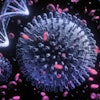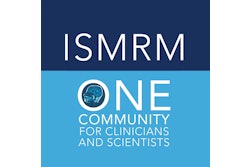A duo of MR techniques may offer earlier insight on therapeutic response to breast cancer treatment, according to two presentations this week at the International Society for Magnetic Resonance in Medicine (ISMRM) in Seattle.
Response to neoadjuvant chemotherapy has historically been assessed by tumor size and volume during the course of treatment, explained Martin Pickles and colleagues in their poster presentations. But actual changes to the tumor occur rather late in the treatment course, the group added.
Pickles is a Ph.D. candidate at the University of Hull in Hull, U.K. His co-authors are Dr. Peter Gibbs, Dr. Martin Lowry, and Lindsay Turnbull, a professor and scientific director of the Centre for MR Investigations at the university.
In the first poster, they hypothesized that diffusion changes on diffusion-weighted MRI (DWI MRI) occur prior to size alternations in tumors undergoing treatment. Specifically, they looked at cell changes that can be seen in the apparent diffusion coefficient (ADC).
For this study, a dozen patients were scanned on 3- or 1.5-tesla scanners (Signa Excite, GE Healthcare, Chalfont St. Giles, U.K.) with a dedicated bilateral breast coil. Scans were done before and after three treatment cycles.
The longest diameter of the lesion was recorded at each time point, and the tumor ADC value was calculated. These measurements were normalized to pretreatment values for comparison. DWI scans were acquired axially with a single-shot dual spin-echo echo-planar imaging (EPI) sequence in three orthogonal planes. The scan time was two minutes and 40 seconds.
According to the results, there was an alternation in ADC values at the first cycle time point. The longest diameter time-point value remained static until the second cycle time point. Based on paired sample t-tests, the ADC before treatment and after cycle one had a value of p = 0.001. The longest lesion diameter had a p-value of 0.834. The ADC value pretreatment and postcycle two had a p-value of 0.004. The longest lesion diameter had a p-value of 0.043.
"The observed increase in ADC prior to a decrease in tumor size measurements ... supports the hypothesis that, via an increase in water mobility following treatment-induced cell damage, ADC can provide an earlier biomarker of response than tumor size," the authors wrote. They speculated that the increase in ADC values was a consequence of cellular damage, resulting in necrosis.
In the second poster, the authors evaluated the role of spin-spin relaxation rate (R2*) in treatment response.
"R2* is believed to reflect the tissue oxygenation levels due to the endogenous BOLD (blood oxygen level-dependent) contrast," they wrote. "Since hypoxic tumors are more resistant to treatment and that following successful tumor cell kill (there is) reduced oxygen delivery, R2* is believed to have great potential for assessing response."
Thirty-three patients were once again scanned before and after three cycles of neoadjuvant chemotherapy. In addition to the clinical scan, gradient-echo images were obtained to facilitate R2* calculation.
According to the results, significant differences between response groups were noted following two cycles of treatment: tumor volume (p = 0.002), R2* (p = 0.009), and relaxation rate (R2, p = 0.014). An ROC analysis revealed a percentage change in tumor volume and R2*, both of which had similar diagnostic accuracies, they stated. The volume area under the curve (AUC) was 0.905 with a 95% confidence interval (CI). The R2* AUC was 0.855 with a 95% CI.
The percentage change in R2* was greater than R2 in those who responded to treatment but there was no significant difference for nonresponders. Pickles' group concluded that R2* status after the second cycle of treatment offered the most reliable way to predict response. However, R2* values before treatment and after cycle one did not have any predictive value, they added.
By Shalmali Pal
AuntMinnie.com staff writer
May 11, 2006
Related Reading
NIH leader: Imaging will advance pure science to reduce real healthcare burden, May 9, 2006
Larger lesions on breast MRI equal greater chance of cancer, February 8, 2006
MRI best for familial breast cancer detection, December 16, 2005
Diffusion-weighted MR noninvasively monitors uterine fibroid therapies, September 9, 2005
Copyright © 2006 AuntMinnie.com


.fFmgij6Hin.png?auto=compress%2Cformat&fit=crop&h=100&q=70&w=100)





.fFmgij6Hin.png?auto=compress%2Cformat&fit=crop&h=167&q=70&w=250)











